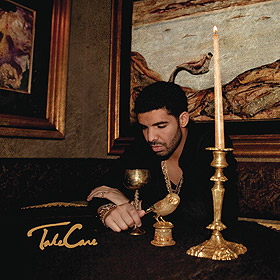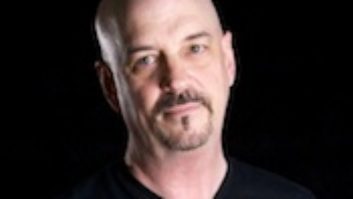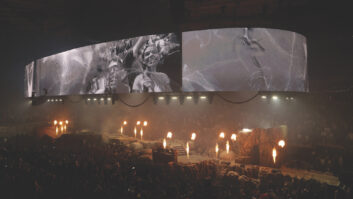
Drake may be the hardest-working artist in the hip-hop and R&B world. Three weeks after his 2010 Thank Me Later release, the artist and his longtime producer, Noah “40” Shebib, began production for what would become the 2011 album Take Care released late November and debuting at Number 1 on the Billboard 200. In between tour dates, appearances at the MTV Awards, BET Weekend and other promotional jaunts, Drake would lay down tracks on the bus and in hotel rooms to the producer’s Mbox-based mobile rig.

Executive producer Noah “40” Shebib has worked with Drake since the artist’s debut.
Photo: Future the Prince
“We have a plethora of interfaces, including a family of every Mbox five times over, tons of laptops,” Shebib says. “It’s grab a computer, grab an interface, plug in a mic and get going. When I’m on the road with Drake, I have a little rackmount on wheels that has an Omni HD interface in it and a Neve 1073 strip and a one-unit Magma chassis with a Native card. I plug this into my laptop wherever I go. This rig is pretty serious business when you’re in a hotel room.”
From planes to trains to automobiles, when Drake has an idea for a song, the two whip out the mobile rig and record right there and then. When Drake’s schedule permits, they also stop in at local studios to flesh out tracks. For example, at L.A.’s Marvin’s Room or Toronto’s MetalWorks, Shebib would plug his HD cards into his laptop via the Magma chassis, rip out the studio’s DiGiLink cables in the back of their computers and plug them into his cards. “My laptops all come up right on the [studio’s] console and that gives me free rein over the entire studio,” he explains, “and it gives me 100-percent transparency and consistency when I walk back into the hotel rooms. So if someone says, ‘Hey, can you tweak that one little thing?’ it’s really easy for me to do it with a pair of headphones.”
This portability also proved useful for the many guest artists on the album, in that Shebib could walk into the session with any of the artists and record straight to his rig. Even when the record neared completion and schedules with those guest artists conflicted with Drake and Shebib’s, those artists’ engineers could simply e-mail Shebib the take and he would then fly it into his Pro Tools session.

But front and center on the album is Drake. As this is more of an R&B-oriented outing—as opposed to being rap-heavy—Shebib kept Drake’s vocals bright and clean and chose a Neumann mic through a 1073. “MetalWorks has a nice set of 1073s, originals,” Shebib says. “They must have about 30 of them. I get my fair pick of the healthiest one on any given day and that makes me pretty happy.” Shebib also places an LA-2 compressor before Drake’s vocal, but touches it very lightly. For ambient noise and strings, Shebib uses stock Avid instruments, including Xpand, Structure and Hybrid. “I do a lot of processing, so every sound I pull up I hit with a pretty big chain of plug-ins,” Shebib says. “I sculpted most of those sounds out of that and kept it really simple.”
The album’s 17 songs, two interludes and two bonus tracks proved to be a full plate for Shebib to mix, so he brought in some tried-and-true production help in the final stages, including assistant Noel Cadastre and Ruben Rivera from L.A., whom Shebib had met when working with Dr. Dre. “Ruben flew out to Toronto and spent six weeks with us [at MetalWorks],” Shebib says. “That was during the mixing process. Drake was continuing to record so I brought Ruben in so that I had someone to track him full time and I could hide in a different room and mix.” For consistency’s sake, it’s fortunate that Rivera had worked with Drake before and so was aware of how the artist likes to record, the signal chain, etc. “It’s hip-hop: We’re talking about one input, one mic,” says Shebib. “It’s not the most challenging job in the world to track a rapper, but the one thing that you need to be is extremely fast on Pro Tools because the caliber of artist that Drake is, he doesn’t have the patience for wasting time. If he wants you to fly eight bars and put a chorus after that, he expects it done near-instantaneously.”
Shebib also brought in mixer Noel “Gadget” Campbell so that he could focus on the overall production and sound during the last month. “I knew I wanted the mixes to have a huge bottom end and I wanted it to have his vocal sit on top,” Shebib says. “We kept it very clean and straightforward so you can hear what he’s saying.”
Final mixes were handed off to mastering engineer Chris Gehringer at New York City’s Sterling Sound, with instructions to keep Drake front and center, “as well as not losing too much of the low end because Campbell and I really pushed the low end on this record. He gave me back exactly what we wanted, and I feel like when you listen to it in a car or at home or with headphones or on a laptop, it’s magical each way.”




